How To Create a Garden Plan For Your Bootstrap Market Garden
So, you have lots of hungry customers signed up for your market garden . Now you need a garden plan to figure out how to grow the veggies to satisfy those customers.
Planning for a bootstrap market garden is a little different than planning your home garden. There are several factors you must consider to develop a good market garden plan:
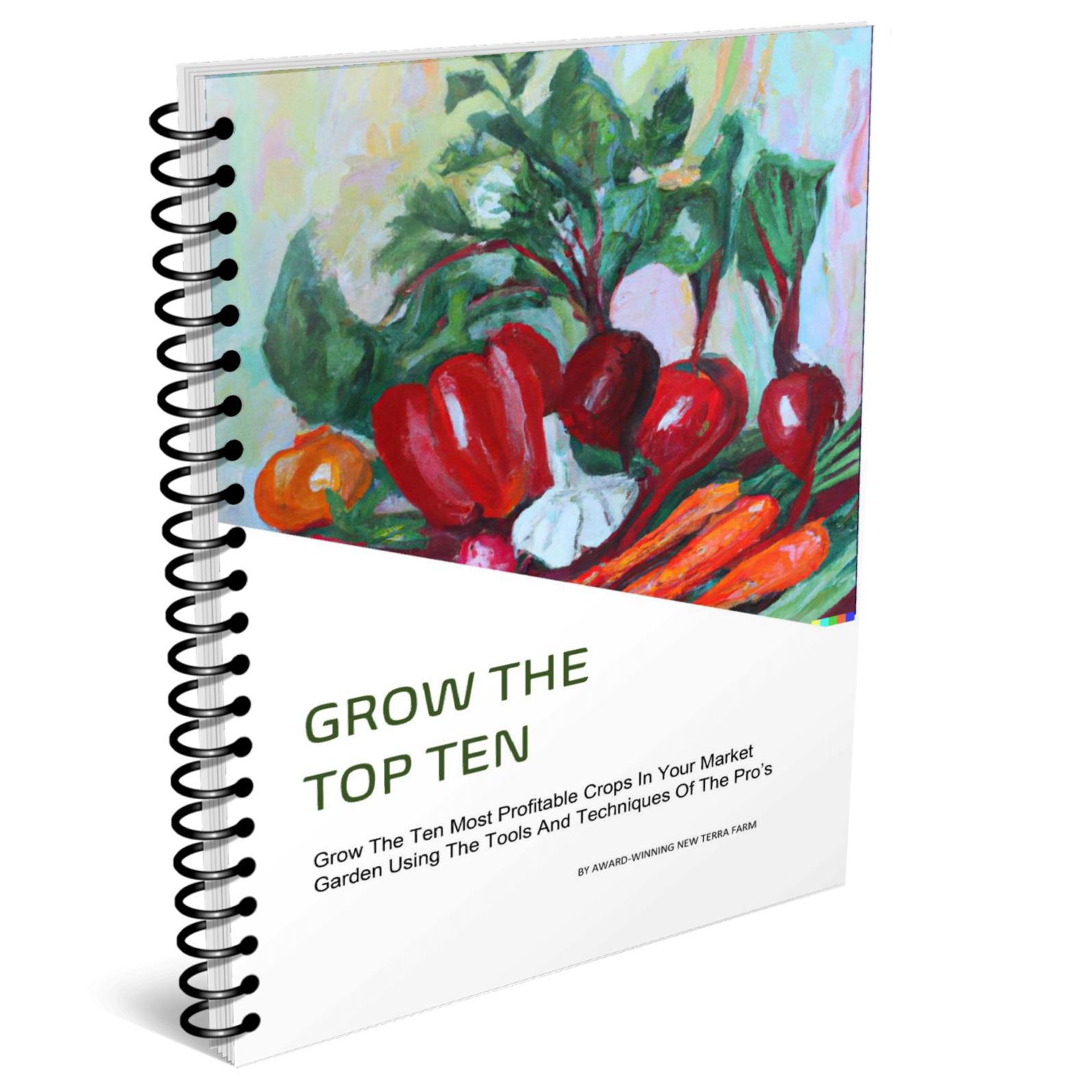
New Special Report: "Grow the Top Ten Most Profitable Vegetables".
Grow like the pro's for maximum productivity (and profit)!
Your garden plan and garden schedule are linked
As you can see, you need to build your garden plan in both space and time. Lets go through each of the points in order:
When do you want to start and end deliveries? This is determined
by the length of your growing season, your skills as a grower, and your
access to land and equipment. If you are in an area that experiences
frost, most of your deliveries will occur between your last frost date
in the spring and the first frost date in the fall.
For example, at New Terra Farm near Ottawa these dates are usually
around May 10 and October 5. So we have about a 20-week growing season,
on average. We extend the season in the spring and fall by using our
greenhouse and plant protection techniques like row covers.
We plan to
start deliveries somewhere in the first two weeks of June, and continue
until about mid-October – i.e. about 19 or 20 weeks of delivery, if the
weather cooperates.
When should we start our crops? We work backwards from our last
spring frost date and our first fall frost date to determine when we
should start plants to have some available all season. We take into
account the date we want to start deliveries, the optimum age of
transplants, and the 'days to maturity' (usually given in the seed
catalogues) for each plant to determine our planting schedule.
For example, we know that broccoli transplants best at about 5 weeks of
age. We know that broccoli is pretty hardy, and can stand some frost if
it is protected by row cover or a hoop house.
And we want broccoli to be
available as soon as possible in the season. We put that together with
the 'days to maturity' figure (55 days for the variety we grow) and we
have the following garden plan for broccoli:
In
a good season, this means we will have broccoli available within a week
or two of starting deliveries. By the way, customers are usually
impressed when you can pull this off!
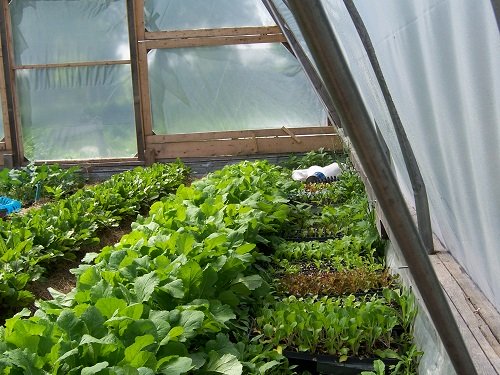 Our greenhouse full of goodies
Our greenhouse full of goodiesHow much of each vegetable you expect to deliver for each share? Obviously, determining this will tell you how much you have to grow as well – e.g. if you have 10 full shares and you plan for each share to receive 1 head of cabbage each week, you need to be able to harvest (at least) 10 heads of cabbage each week.
We figure this out well before the
season so we can determine how much space we need in our greenhouse and
in our garden.
How many plants do I need to start? We base our first estimates
on average growing requirements for each vegetable for a family of four.
For example, to provide green beans for fresh eating for a family of
four will take about 30 plants. Since bush bean plants will provide
pickings for about 3 weeks, we need to start (at least) 30 plants every
three weeks, for each full share.
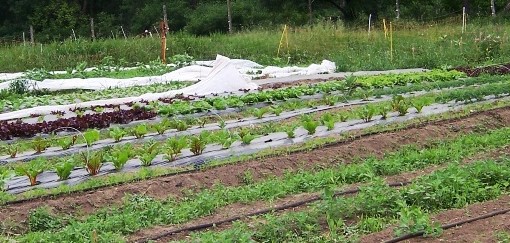 We lay out our garden in 50-foot rows to make garden planning easier
We lay out our garden in 50-foot rows to make garden planning easier
How much space will each crop take, and how big does the garden need to be?
Using the example above, since we plant beans 3 inches apart in the
row, we will need 30 x 3 inches = 7.5 feet of row of beans for each
share, at each planting.
And since you should provide a ‘safety factor’ (to allow for poor
germination, crop losses, etc) you should probably plant the beans 2
inches apart in the row and thin them out to a 3-inch spacing when they
come up. This means you should plant 45 bean seeds for each share, at
each planting.
Then you factor in the number of plantings of beans you should do (based
on the length of your growing season and the re-plant interval for
beans i.e. 3 weeks) to come up with the number of garden beds you will
need for beans. Do this for each crop, and you can calculate a total
area needed for your garden.
Whew! Sounds complicated, but this is the process we follow for each
crop to build our market garden plan. That's the reason we developed our
Bootstrap Market Garden Planner to help us figure all this out.
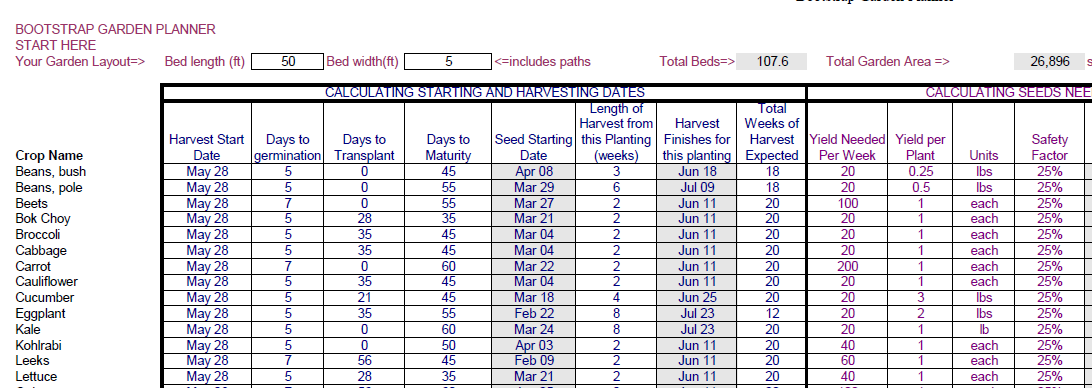 You can get this tool with my Bootstrap Market Gardening Pack
You can get this tool with my Bootstrap Market Gardening Pack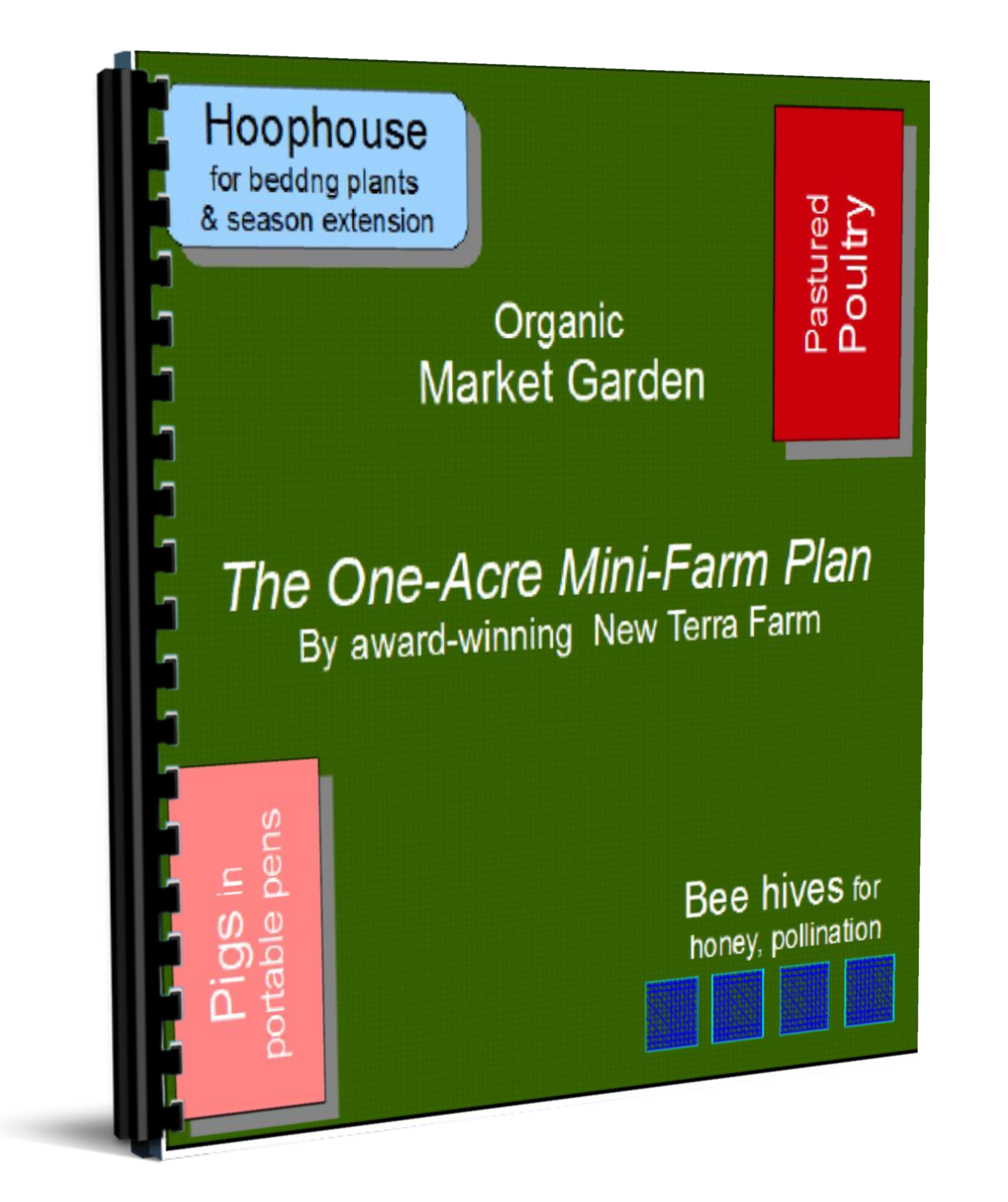
Get my FREE One-Acre Farm Plan and learn how to raise pigs, chickens and more, integrated with an organic market garden, to
make more money from your small property.
Imagine building a profitable and sustainable mini-farm even on a small piece of land.
Download your free mini-farm plan here
Download more free reports here
- Home Page ›
- Bootstrap Market Gardening ›
- Bootstrap Garden Plan
- Home Page ›
- High income Market Garden ›
- Bootstrap Garden Plan